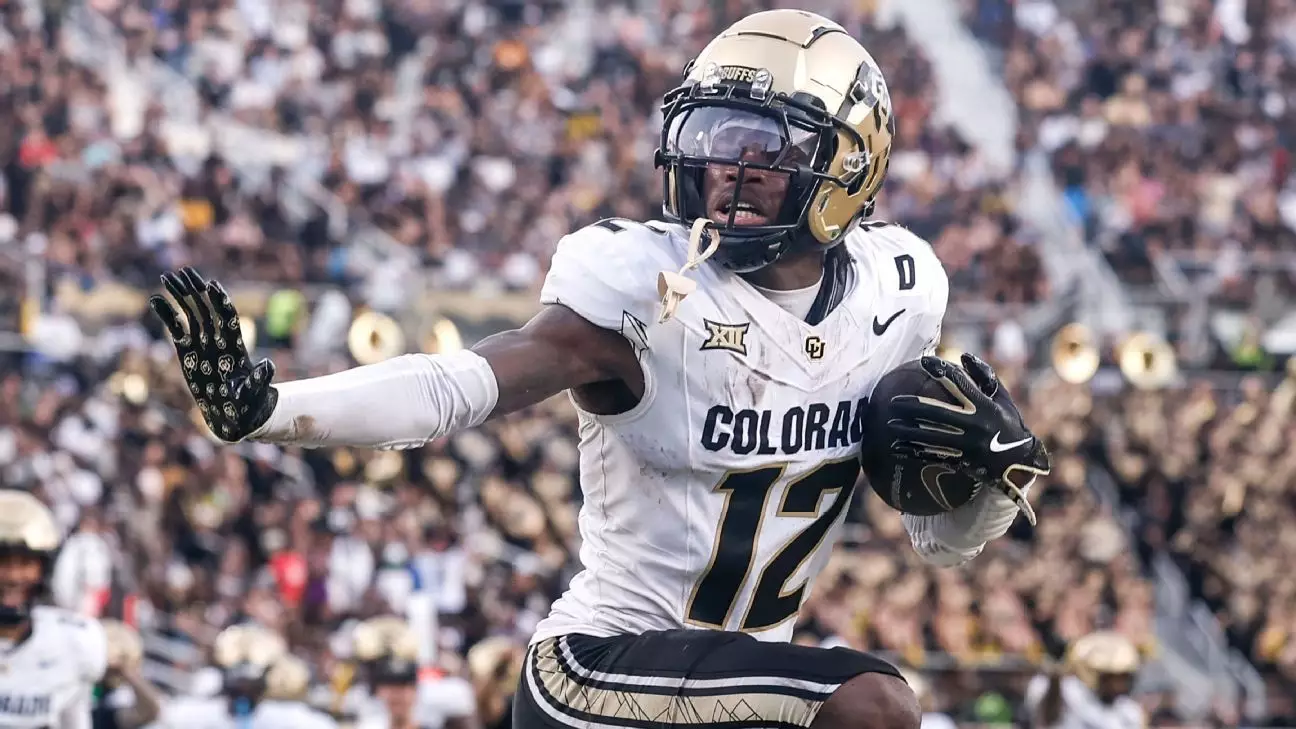Travis Hunter, the prodigious talent from Colorado, is poised to become a game-changer in the NFL, potentially making waves as one of the first players in years to seamlessly transition between the positions of cornerback and wide receiver at the professional level. Recently, New York Giants’ general manager Joe Schoen confirmed that the team wouldn’t shy away from deploying him on both sides of the ball if they select him third overall in the upcoming draft. This reflects a growing awareness within NFL teams regarding players who possess the rare ability to excel in multiple roles—a trait that could redefine positional versatility in professional football.
Hunter’s aspirations to avoid being pigeonholed into a single position underscore a broader trend among younger players who thrive in diverse, dynamic roles. His insistence on being allowed to showcase his capabilities as both a receiver and a defender speaks volumes about the evolving identity of football athletes. Hunter has made it clear: a career limited to one position is not acceptable. “It’s never playing football again,” Hunter stated, revealing the depth of his passion for the game. Such fervor can be intoxicating, promising thrilling performances in this era defined less by specialization and more by multifunctionality.
The Giants’ Unique Positioning
For the New York Giants, the decision to draft Hunter could hinge on their current roster dynamics, particularly their depth in both the receiving corps and the secondary. With solid receivers already secured, the Giants are positioned to explore the potential of Hunter without compromising their existing personnel. According to Schoen, the organization is in a “unique spot” that could allow for strategic flexibility regarding how they utilize Hunter’s dual-threat capabilities. This would enable them to capitalize on opposing defenses’ vulnerabilities, a tactic that has gained prominence in today’s NFL where adaptability is crucial.
As intriguing as Hunter is, the question remains whether he can make the leap to the professional level while excelling in both roles. The physical and mental demands of NFL football are significantly higher than those encountered in college. Schoen noted that managing Hunter’s workload will be vital. Learning complex offenses and defenses necessitates a mental acuity that can take time to develop. Teams that expect immediate mastery from a player attempting to juggle two positions may find themselves disappointed.
Hunter’s Elite Athleticism and Potential
There is no denying the raw talent that Hunter possesses. With over 86% of snaps played last season, he showcased an endurance and skill set that is rare in both college and professional football. In a league where efficiency is prized, Hunter’s ability to run routes and cover opposing receivers makes him an anomaly that could potentially dominate games. Moreover, his standing as a potential Pro Bowl player at either position highlights the consensus among scouts that he is more than just a promising prospect; he embodies the qualities of a transformative player.
However, one must be cautious in predicting his future success. The opinions of NFL general managers, though insightful, can often reflect short-term evaluation rather than an appreciation for the long-term growth of a player. The physicality of the NFL paired with the cognitive load of its strategic intricacies will test Hunter in ways he has yet to experience. It’s essential for him to strike a balance between showcasing his talents and acclimating to the higher level of competition—a challenge that has claimed the ambitions of many a promising player before him.
The Draft Dilemma: Hunter vs. the Quarterback Controversy
As the Giants prepare for the draft, their decision-making process is further complicated by the need to evaluate the potential of selecting a quarterback. With talent like Shedeur Sanders—Hunter’s college teammate—linked to the team, the Giants face a dilemma: should they prioritize a quarterback who could become a franchise cornerstone, or secure a generational talent in Hunter? Schoen has hint at not feeling obligated to select a quarterback at this stage, suggesting that he recognizes that building a competitive roster does not solely revolve around this singular position.
This situation speaks volumes about the evolution of team-building in the NFL. As organizations become increasingly flexible in their positional strategies, the potential allure of a dual-threat player like Hunter cannot be understated. The ability to draft a player who can impact the game on two fronts presents an opportunity to exploit matchups and confound defenses in unprecedented ways. The Giants may not just be adding a player; they could be shifting the paradigm of how roster decisions are made at the highest level of sport.
Ultimately, as the draft looms closer, the stakes are decidedly high. Travis Hunter’s fate—and his potential as a dual-threat player—hangs in the balance, potentially destined to redefine not only his career but the very fabric of NFL strategy in years to come.


Leave a Reply